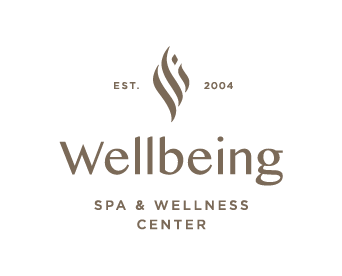
The Psychology of Touch: How Healing Touch Spa Therapies Transform Body and Mind
In our modern world of screens, digital communication, and social distance, physical touch has become one of the most overlooked human needs. Yet, the power of touch remains one of the most fundamental forces in emotional healing, stress reduction, and personal connection.
Within the world of wellness, healing touch spa therapies have emerged as a sanctuary — a space where the mind, body, and emotions realign through the gentle yet powerful language of human contact.
Touch is not only a sensory experience — it is a psychological and physiological dialogue between the nervous system, the brain, and the heart. From the moment we are born, touch shapes our sense of safety, trust, and emotional wellbeing. As we grow older, therapeutic contact continues to affect our mood, stress levels, and even physical healing.
In this comprehensive guide, we’ll explore the psychology of touch, its profound role in wellness treatments, and how massage and therapeutic touch help reduce isolation, soothe emotional tension, and even reshape pain memory.
1. Understanding the Psychology of Touch

Touch is the first sense we develop and the last one we lose. Before we ever speak, we communicate through skin-to-skin contact. This primal form of communication affects the way we bond, feel comforted, and regulate emotions throughout our lives.
The Science Behind Touch
Human skin contains millions of sensory receptors, including special nerve fibers called C-tactile afferents. These fibers respond specifically to gentle, caring touch — like a slow stroke or soft pressure — and send signals to the brain regions responsible for emotion and social bonding, particularly the insula and orbitofrontal cortex.
When activated, these areas trigger the release of “feel-good” chemicals such as:
- Oxytocin, known as the “bonding hormone,” promoting trust and connection.
- Serotonin, which stabilizes mood and enhances calmness.
- Endorphins, natural painkillers that create feelings of pleasure and relaxation.
In psychological terms, touch regulates our autonomic nervous system, shifting us from “fight or flight” to “rest and digest.” This explains why even a brief massage or gentle hand contact can create a powerful sense of calm and emotional grounding.
2. The Human Need for Touch in a Touch-Deprived World
We live in a time where digital interaction has replaced much of our face-to-face connection. While this brings convenience, it also leads to what psychologists call “touch hunger” or “skin hunger.”
People experiencing touch deprivation often report:
- Increased anxiety and depression.
- Sleep disturbances.
- Difficulty with emotional regulation.
- Feelings of isolation and loneliness.
In contrast, consistent therapeutic touch — such as through massage or healing touch spa treatments — helps restore emotional balance and reconnects individuals to their bodies and to others.
This is not merely physical comfort; it is psychological nourishment. Touch reminds us that we are seen, safe, and cared for.
3. Healing Touch Spa Therapies: A Modern Expression of Ancient Wisdom

Throughout history, civilizations have recognized touch as a powerful tool for healing. Ancient Egyptians, Chinese, and Greeks used forms of massage to restore balance and vitality. Today, healing touch spa therapies continue this tradition — combining ancient principles with modern science.
A healing touch spa doesn’t simply focus on muscles; it focuses on energy, emotion, and awareness. Practitioners understand that emotional pain often resides in the body — stored as tension, stiffness, or chronic discomfort.
Common healing touch spa treatments include:
- Swedish massage for relaxation and improved circulation.
- Deep tissue therapy for muscle recovery and emotional release.
- Aromatherapy massage using essential oils to influence mood and stress.
- Reflexology targeting pressure points that connect to emotional centers.
- Energy healing techniques, such as Reiki or intuitive touch, focusing on emotional and energetic balance.
Each of these therapies harnesses the therapeutic power of touch — using pressure, rhythm, and warmth to stimulate both physical and psychological recovery.
4. Therapeutic Touch Benefits: Beyond Relaxation
Most people think of massage as a luxury or indulgence, but science shows that therapeutic touch benefits extend far beyond simple relaxation.
Here’s how healing touch affects multiple dimensions of wellbeing:
a. Emotional Regulation
Touch directly influences the parasympathetic nervous system, lowering cortisol (the stress hormone) and promoting feelings of security. A single session can leave clients calmer, lighter, and more emotionally balanced.
b. Reduction of Pain and “Pain Memory”
Chronic pain often has emotional roots. When we experience injury, stress, or trauma, the body forms pain memories — neural pathways that continue firing even after physical recovery. Therapeutic touch helps interrupt these pathways, allowing the body to “reset” and release the stored pain response.
For example, studies have shown that gentle massage therapy can reduce pain perception in patients with fibromyalgia, migraines, and arthritis by retraining the nervous system to interpret touch as safe, not threatening.
c. Strengthening Immune Response
Touch activates the vagus nerve, which helps regulate heart rate, digestion, and immune function. Regular massage boosts white blood cell activity, improving the body’s natural defense mechanisms.
d. Reconnection and Self-Acceptance
For many, especially those struggling with anxiety or body image issues, touch is transformative. In a safe, respectful environment like a healing touch spa, clients can experience positive physical contact that fosters trust and body awareness. This nurtures self-compassion and emotional healing.
5. Massage and Emotional Relief: How the Body Releases Feelings

Have you ever felt tears well up during a massage, or sudden emotions arise after a treatment? This is not unusual — it’s a process known as emotional release, a powerful aspect of massage emotional relief.
The Body Keeps the Score
Healing touch spa therapiesAccording to body psychology, emotions that are not expressed or processed become stored in the body — especially in muscles, fascia, and connective tissue. Over time, these “emotional imprints” create physical tension, postural changes, or even pain.
During massage, when a therapist gently works through these areas, the nervous system relaxes, allowing the body to release both muscular tightness and emotional blockages.
Common Emotional Reactions During Massage
- Spontaneous tears or laughter.
- Deep sighs or sensations of warmth.
- Sudden memories surfacing.
- A profound sense of calm or peace afterward.
This is not a sign of weakness — it’s a sign of deep healing. The touch acts as a bridge between body and emotion, helping clients process unresolved experiences safely and naturally.
How Therapists Support Emotional Healing
Trained practitioners at healing touch spas are mindful of these reactions. They create safe spaces for clients to relax, breathe, and allow emotions to flow without judgment. The therapist’s presence and intention matter as much as the physical technique — empathy itself becomes a healing force.
6. Touch and the Mind-Body Connection
Modern neuroscience confirms what ancient healers always knew: the body and mind are inseparable. Our thoughts and feelings influence our physical state, and our bodies reflect our emotions.
Touch strengthens this mind-body connection by enhancing interoception — the awareness of internal sensations. When receiving therapeutic touch, clients often notice subtle sensations: heartbeat rhythms, breath flow, muscle tension softening. This awareness helps them reconnect with themselves, fostering mindfulness and inner calm.
Mental Health Benefits of Therapeutic Touch
- Reduced anxiety and depression symptoms.
- Improved emotional resilience.
- Better sleep quality.
- Enhanced focus and mental clarity.
Massage and other healing touch therapies are increasingly being recognized in holistic psychology and trauma therapy as effective complementary tools for emotional regulation.
7. Reducing Isolation and Building Connection Through Touch

One of the most profound therapeutic touch benefits is its ability to counteract isolation — a major emotional challenge in the modern world. Human beings are social by nature; when touch is absent, feelings of separation intensify.
At a healing touch spa, clients are met not only with warmth and physical care but also empathic presence. This connection — however temporary — can significantly ease loneliness, especially for individuals who live alone, work remotely, or experience social withdrawal due to anxiety or grief.
Touch communicates, without words:
“You are not alone. You are safe. You are cared for.”
In this way, therapeutic touch becomes a psychological bridge — reconnecting individuals to the human experience of closeness, belonging, and compassion.
8. The Role of Touch in Trauma Recovery
For people recovering from emotional trauma, touch can be both sensitive and transformative. Trauma often creates disconnection — from the body, from emotions, and from others. Therapeutic touch, when approached with respect and consent, can help restore this lost connection.
Gentle Touch for Emotional Safety
In trauma-informed bodywork, therapists use slow, mindful touch to help clients rebuild trust in physical contact. The goal is not to “fix” but to invite awareness. Gradually, the body learns that touch can be safe again.
This process helps regulate the nervous system, reduce hypervigilance, and dissolve stored tension patterns linked to past stress. Over time, clients often report improved sleep, emotional balance, and a deeper sense of embodiment.
9. Creating a Healing Environment: The Spa as a Sanctuary
A healing touch spa is designed not only for treatment but for transformation. The environment itself plays a critical role in psychological healing.
Elements of a Healing Space
- Warm lighting and natural textures promote safety and serenity.
- Soothing sounds — waves, chimes, soft music — calm the mind.
- Aromatherapy scents such as lavender, sandalwood, or jasmine reduce anxiety.
- Professional touch and presence — respectful, intentional, and grounded.
This multisensory setting communicates to the nervous system that it can let go. The result is a deep shift from mental tension to full-body relaxation — a fertile ground for healing.
10. Practical Ways to Integrate Healing Touch Into Daily Life

You don’t need to visit a spa every week to experience the benefits of therapeutic touch. Simple, intentional contact can have lasting effects.
Try These Touch-Based Wellness Practices:
- Self-massage rituals: Apply warm oil or lotion to your hands, neck, or feet at night. This encourages relaxation and body awareness.
- Partner touch: A slow back rub, hand massage, or simple embrace releases oxytocin and enhances emotional closeness.
- Mindful skincare: Instead of rushing your morning routine, turn cleansing or moisturizing into a mini-meditation with gentle self-touch.
- Weighted blankets or comfort objects: These simulate deep-pressure touch, reducing anxiety and promoting sleep.
- Regular spa visits: A monthly visit to a healing touch spa helps maintain physical and emotional balance — especially for those with high-stress jobs or sedentary lifestyles.
11. Future of Healing Touch in Wellness and Mental Health
As science continues to explore the mind-body connection, therapeutic touch is gaining recognition in integrative medicine. Hospitals, rehabilitation centers, and mental health clinics increasingly incorporate massage and touch-based therapies as part of holistic care.
Future research is expected to deepen our understanding of how massage emotional relief supports trauma recovery, chronic pain management, and emotional resilience.
In a world that often feels disconnected, healing touch represents a return to something profoundly human — presence, empathy, and shared energy.
12. Conclusion: Touch as the Language of Healing

Healing touch spa therapies, Touch is more than a physical act — it is the language of compassion. It communicates what words cannot: safety, trust, and care. In the context of wellness, healing touch spa therapies remind us that healing begins not only in the body but in the mind and spirit.
Through therapeutic touch benefits, people rediscover emotional freedom, release tension stored in their bodies, and reconnect with their inner peace. Through massage emotional relief, they experience what it means to be fully present, to feel again, and to let go.
In the end, the psychology of touch teaches us a timeless truth:
Healing is not something done to us — it is something awakened within us, one gentle touch at a time.






Leave a Reply